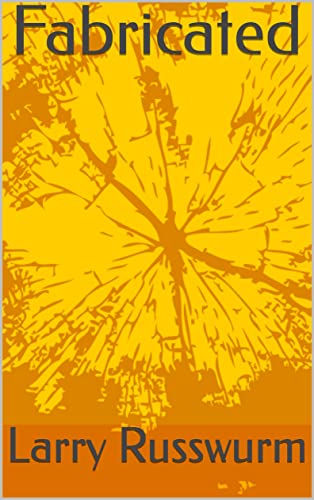I have drawn for you the so called Necker cube. It reminds one of a real world cube constructed of 12 straight wires. For centuries people have been fascinated by its ambiguity. It can be seen to represent a cube with the bottom face forward or a different cube with its top face forward.
There has been much discussion of the Necker cube. Like why do most people seem to see it with the bottom face forward rather than the top face forward? This is relatively mundane to me as we’re used to seeing children’s blocks on the ground (the bottom face forward) and are less likely to see cubes suspended above us (top face forward).
What bothers me most about the Necker cube is that it is all a lie. It is not a cube. Real cubes differ from Necker cubes when art perspective is taken into account. Seen next is a real cube with the 12 wire edges . It is bottom face forward. When you look at it top face forward you end up with a shape that no one would call a cube. There is no ambiguity with the real cube. There is only one interpretation of a real cube.
So I had to laugh while doing research on Necker cubes. I saw this Wikipedia article, this other article, and a dictionary definition of a Necker cube all using the word perspective. They were all totally oblivious to the art perspective point that negates their interpretation. It is an unfortunate choice of words. Even if I were to describe the Necker cube as schizophrenic, it would only fall short with regards to humour. (Schizophrenic does not mean having multiple personalities as many lay people think). There was however this article from Free net encyclopedia in the first page of Duck Duck Go hits that said the Necker cube used “isometric perspective” that does seem to have it right.
There are only two ways I know of for a real world cube to approach a Necker cube (but never quite get there). You can put the cube a huge distance from you and then look at the magnified image through a telescope.
Or you can shrink the cube down to an incredibly small size and then magnify it a large amount with a microscope.
With these two methods a real cube would look a lot like a Necker cube. But then, if we’re just willy nilly using technology then why can’t I use a spaceship to go to the far cube and find out which way it pops? And can’t I use nanotechnology to see that small cube as large and also see which way it pops three dimensionally?
Ignoring perspective is what gets the Necker cube to be ambiguous. This trick is also used with Schroder stairs and I don’t know how many other optical illusions. I don’t think these illusions show us as much about reality as some would suggest.



